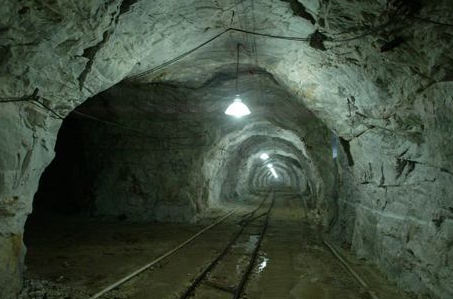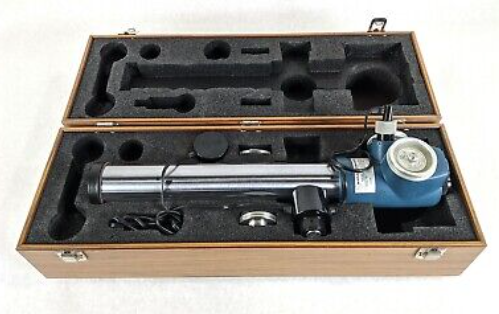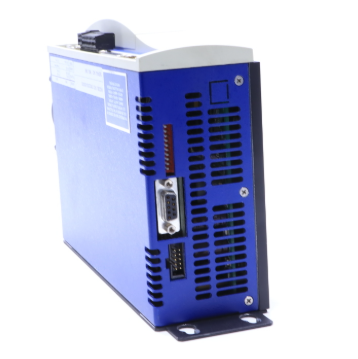"Urban Mine" -- an important technology to realize resource recycling
Foreword - What is a "metal mine"
As the environment and energy have become global issues, resource recycling has become a very important topic. One of the ways to realize resource recycling is "urban mine". Urban mining refers to the recycling and reuse of metal materials from waste household appliances, mobile phones, personal computers and other products. It is compared to mining because it extracts resources from urban waste. The idea of urban mines has been around for a long time, but now with the momentum of resource recycling gaining momentum, new initiatives are being promoted from a more holistic perspective.
The resource cycle consists of the ingenuity of the supply chain and the combination of many technologies. "Urban mines" are also being promoted through a combination of technologies. According to the characteristics of the metal, there are different recycling methods, which require a variety of technologies, such as the dismantling and sorting of waste products, the recycling of useful metals, the accumulation of homogeneous metals, refining and processing. The Institute is conducting research and development in the field of resource recycling, including urban mines.

1 Necessity of urban mines
Around the 1990s, terms such as "eco" and "recycle" became popular. "Urban mining" has been advocated since the 1980s, which means recycling metal resources from urban waste and reusing them to make these products. Today, it is positioned as one of a group of technologies to solve global problems such as resource recycling and carbon neutrality.
Japan imports most of its resources. In recent years, due to conflicts, disasters, infectious diseases and other factors, the situation of production and logistics delays is increasing. It can be said that in the future, various material resources should be recycled not only from an environmental point of view, but also from an economic point of view.
2. The change of the concept of metal resources
The term "urban mines" gained widespread attention in Japan in 2010 when China temporarily halted exports of rare earth minerals over the disputed Diaoyu Islands. This has sent shockwaves through the Japanese industry, and the issue of securing essential materials for high-tech products such as precision equipment has become a focus of discussion.
Japan imports most of its metal resources, including rare metals *2, and earns profits on the world market by manufacturing and exporting high-tech products that use these resources. This incident shook this premise, so Japan began to focus on recycling, but this situation did not last long due to the collapse of rare metal prices and other reasons. However, metal resources are limited, and future supply instability is inevitable. In addition to precious metals (gold, silver, platinum, palladium, etc.) and base metals (iron, aluminum, copper, etc.) that are already recycled, structures and technologies that can economically and stably recover rare metals and waste products for reuse must also be established.
3 Recycling methods and values of different metals
With regard to metal resources, it is important to have a strategy of recycling a variety and storing a certain amount. Because we never know which resources will be in short supply and when, it is important to be able to respond to international situations and level market prices. However, different metals have different recycling and reuse methods, and the importance of metals will change as The Times change. Cobalt, for example, is already used in lithium-ion batteries. However, recently in China, EV (electric vehicle) batteries are being converted to iron phosphate lithium-ion batteries, and the proportion of cobalt in lithium-ion batteries using cobalt is decreasing, and the role required for resource recovery is gradually changing.
As for aluminum, the best aluminum is recycled into window frames, etc., and the lesser aluminum is die-cast into car engines. However, there are also concerns that the popularity of electric vehicles will lead to a decline in engine production, as well as the lack of recycled aluminum available.

In addition, tantalum is used in capacitors mounted on PC circuit boards. At present, tantalum is being replaced by other capacitors, and only small amounts of tantalum can be recovered from printed circuit boards. In this way, the incentive to recycle tantalum from used computers will be reduced, and rare metals such as tantalum will continue to be used as a base material for roads and concrete.
In the past, the mainstream was to only recover specific metals from specific products, but recycling needs to change with the metal used. In addition, in order to cope with unpredictable supply instability, the strategy of stable circulation in many metals and materials is very important.
4 "Horizontal Recycling" and "Cascading Recycling"
It is worth mentioning the concepts of "horizontal recycling" and "cascading recycling". "Cascade recycling" refers to the recycling of products whose value is less than the original product. For example, aluminum for die casting and tantalum for road substrates are cascaded recycling. Although some can be recycled many times, it is basically done by using it for other purposes and "absorbing it into society" so that it does not become waste. On the other hand, "horizontal recycling" refers to recycling it into a product that is equivalent to the original product that was used. If you can do this, you can "resource cycle" and use it multiple times. Horizontal recycling of metals can be said to use collection systems and technologies to create resources comparable to those of natural mines.
Unlike plastic, whose value lies in its fragile "molecular structure," metal's value lies in its indestructible "element itself," so horizontal recycling is desirable. But for now, horizontal recycling is limited to copper and some precious metals. This is because when recycled, smelting can be profitable even if the metal concentration is relatively low. If gold is enriched to 10ppm at the recycling plant, copper to a few percent, and tantalum to 20 to 30 percent, the remaining metal can be manufactured at the smelter for horizontal recycling.
Many other metals cannot be recovered horizontally if they do not reach a higher concentration, and many are recycled in cascades. Although the practice of using high-priced tantalum and other materials as roadbed materials helps reduce waste (landfill disposal), it is not an effective recycling.
Therefore, in order to strategically expand the horizontal recycling of metals, the Institute is conducting a study called "Strategic Urban Mine."
5 Measures to implement resource cycling
In 2013, IIDR established the Strategic Urban mining REsearch base SURE (Strategic Urban mining REsearch base), which brings together researchers related to resource recycling across sectors. It is committed to improving recycling technology, smelting technology for metal recovery, product design to promote resource recycling, and waste volume prediction technology.
Resource recycling requires the cooperation of enterprises. As a result, the SURE Alliance, whose members include private companies, industry groups, local governments and government agencies, was established in 2014 to increase the recycling rate of metal resources, expand the urban mine market, and realize the localization of Japan's recycling equipment industry and recycling plants.

The Separation Technology Development Center (CEDEST) was established in 2018 as one of SURE's initiatives. It acts as a research and development base for national projects and is currently developing equipment for the world's first automated/autonomous recycling plant. In addition to developing individual devices independently with participating companies, an integrated system-wide unmanned sorting system is being developed. The goal is to disassemble and sort waste 10 times faster than traditional labor, and to sort used parts with a separation efficiency of 80% or more.
Inside the factory
A system is being developed that can identify and disassemble more than 2,000 models of smartphones, digital cameras, camcorders and tablets, safely remove batteries and extract rare metals from circuit boards, and a demonstration plant is planned to be built in 2023.
In order to achieve resource recycling, it is also necessary to create a market for recycling equipment. Because most of Japan's resource recycling enterprises are small and medium-sized enterprises, equipment investment is limited. Therefore, it is not only necessary to broaden the understanding of the equipment, but also to broaden the understanding of the structure of the equipment.
In addition, on the premise of prioritizing the upgrading of domestic resource recycling in Japan, the global development of Japanese recycling equipment will also be considered in the future. It would be even better if recycling plants could be exported to Asian countries. It is important to prove that by introducing advanced recycling technologies, if there is an increase in high-quality renewable resources that can be utilized locally, then Japanese plants in the region can utilize them, which will also benefit the importing countries.
There is an urgent need to create technologies and mechanisms for recycling resources that are rooted in Japanese industries, rather than copying European technologies. In order to build a resource-recycling society of the future, it is necessary to paint a broader picture of what the future of Japanese industry and society will look like, and what technologies will be needed to do so.
*¹ Rare earth: Scandium, yttrium and 17 elements belonging to the lanthanide series. Many of these are indispensable to industrial products, such as neodymium being used to make permanent magnets. In particular, dysprosium and terbium are known as heavy rare earth elements and are very rare.
*² Rare metals: The general term for metals with less circulation such as nickel, cobalt, platinum, and rare earth, which once selected 47 elements (with 17 rare earth elements as 1 mineral, a total of 31 mineral species), and now expanded to 55 elements. Rare earth is the academic term used worldwide, but rare metals are a classification specific to Japan. As a policy term, the names and types vary from country to country.
- EMERSON
- Honeywell
- CTI
- Rolls-Royce
- General Electric
- Woodward
- Yaskawa
- xYCOM
- Motorola
- Siemens
- Rockwell
- ABB
- B&R
- HIMA
- Construction site
- electricity
- Automobile market
- PLC
- DCS
- Motor drivers
- VSD
- Implications
- cement
- CO2
- CEM
- methane
- Artificial intelligence
- Titanic
- Solar energy
- Hydrogen fuel cell
- Hydrogen and fuel cells
- Hydrogen and oxygen fuel cells
- tyre
- Chemical fiber
- dynamo
- corpuscle
- Pulp and paper
- printing
- fossil
- FANUC
- Food and beverage
- Life science
- Sewage treatment
- Personal care
- electricity
- boats
- infrastructure
- Automobile industry
- metallurgy
- Nuclear power generation
- Geothermal power generation
- Water and wastewater
- Infrastructure construction
- Mine hazard
- steel
- papermaking
- Natural gas industry
- Infrastructure construction
- Power and energy
- Rubber and plastic
- Renewable energy
- pharmacy
- mining
- Plastic industry
- Schneider
- Kongsberg
- NI
- Wind energy
- International petroleum
- International new energy network
- gas
- WATLOW
- ProSoft
- SEW
- wind
- ADVANCED
- Reliance
- YOKOGAWA
- TRICONEX
- FOXBORO
- METSO
- MAN
- Advantest
- ADVANCED
- ALSTOM
- Control Wave
- AB
- AMAT
- STUDER
- KONGSBERG
- MOTOROLA
- DANAHER MOTION
- Bently
- Galil
- EATON
- MOLEX
- Triconex
- DEIF
- B&W
- ZYGO
- Aerotech
- DANFOSS
- KOLLMORGEN
- Beijer
- Endress+Hauser
- MOOG
- KB
- Moxa
- Rexroth


Email:wang@kongjiangauto.com

















































































































